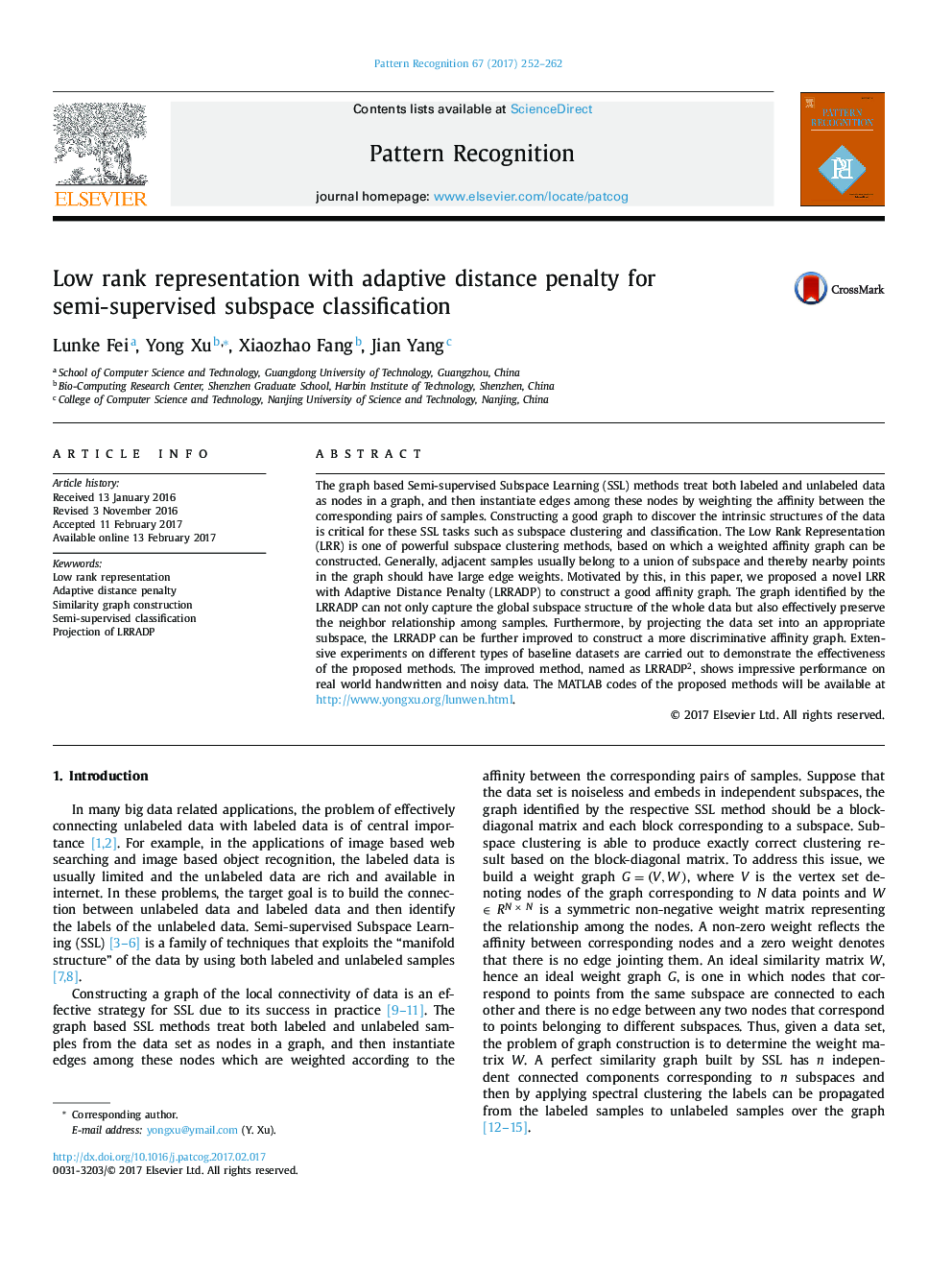| Article ID | Journal | Published Year | Pages | File Type |
|---|---|---|---|---|
| 4969780 | Pattern Recognition | 2017 | 11 Pages |
â¢A novel LRR with adaptive distance penalty method is proposed for SSL.â¢LRRADP can better capture both the global structure and local affinity of the data.â¢The projected based LRRADP(LRRADP2) shows impressive robustness.â¢Extensive experiments demonstrate the effectiveness of the proposed method.
The graph based Semi-supervised Subspace Learning (SSL) methods treat both labeled and unlabeled data as nodes in a graph, and then instantiate edges among these nodes by weighting the affinity between the corresponding pairs of samples. Constructing a good graph to discover the intrinsic structures of the data is critical for these SSL tasks such as subspace clustering and classification. The Low Rank Representation (LRR) is one of powerful subspace clustering methods, based on which a weighted affinity graph can be constructed. Generally, adjacent samples usually belong to a union of subspace and thereby nearby points in the graph should have large edge weights. Motivated by this, in this paper, we proposed a novel LRR with Adaptive Distance Penalty (LRRADP) to construct a good affinity graph. The graph identified by the LRRADP can not only capture the global subspace structure of the whole data but also effectively preserve the neighbor relationship among samples. Furthermore, by projecting the data set into an appropriate subspace, the LRRADP can be further improved to construct a more discriminative affinity graph. Extensive experiments on different types of baseline datasets are carried out to demonstrate the effectiveness of the proposed methods. The improved method, named as LRRADP2, shows impressive performance on real world handwritten and noisy data. The MATLAB codes of the proposed methods will be available at http://www.yongxu.org/lunwen.html.
